Effective Methods for Removing Flies from Dogs


Intro
The spring and summer months can often be a nightmare for dog owners when pesky flies come buzzing around. These irritating insects not only have a knack for annoying our furry friends, but they can also pose real health threats. Flies can be drawn to wounds, feces, or even just the scent of a pet, creating distress for both the dog and its owner. This guide aims to provide concrete methods for removing flies from dogs, emphasizing quick removal tactics, preventative measures, and natural remedies to maintain dog comfort and health in environments where flies tend to swarm.
Pet Care and Grooming
Dealing with flies starts with proper pet care and grooming. A well-groomed dog is less appealing to flies because they tend to gather more around unkempt fur and the skin beneath. Here are a few crucial considerations:
Importance of Regular Care
Regular grooming facilitates better hygiene and reduces the chances of attracting flies. When dog fur is clean and trimmed, it minimizes the number of areas where flies can lay eggs or hide. Besides flies, a consistent grooming routine also helps in recognizing skin issues early, which can attract pests in the first place.
Grooming Techniques by Pet Type
For dogs with longer fur like Golden Retrievers, regular brushing can prevent matting, ensuring flies do not find a cozy home. Short-haired breeds, such as Beagles, may benefit from less frequent grooming but still need regular baths to stay fly-free. For every breed, keeping the nail and ear clean is also vital since these are hotspots for parasites.
Tools and Products Recommendations
A few essential tools for effective grooming include:
- Deshedding tools for reducing loose hairs and dander.
- Flea combs: Not fly-specific, but good for overall pest control.
- Natural shampoos: Use something without harsh chemicals that could irritate their skin.
Seasonal Care Tips
During peak fly months, keep an eye on how your dog’s coat is faring. Keeping the coat shorter in summer can help lessen fly attractions. Avoid letting your dog play in filthy environments and try to stay away from areas with manure or standing water.
Health and Nutrition
Understanding Pet Nutrition
The overall health of your dog is influenced by what it eats. A balanced diet fills many gaps, particularly in skin health. Pets fed low-quality food may develop skin conditions, attracting flies. High-quality protein is essential, so consider brands like Royal Canin or Hill’s Science Diet.
Common Health Issues by Species
Canines can experience various skin conditions leading to fly infestation. For instance, hot spots often develop from allergies or skin irritations. Regular vet check-ups can help manage these conditions effectively.
Preventive Care and Regular Check-Ups
Regular veterinary visits ensure that potential problems are spotted before they worsen. Vaccinations and checks for parasites can also minimize fly-related health risks.
Food and Dietary Advice
Consider supplementing your dog’s diet with omega-fatty acids and probiotics for enhanced skin health and digestion. Kay's Naturals Protein Snack or solid treats with natural ingredients can be good options.
Behavioral Training
Training your dog also plays a role in managing interactions with flies. Here’s how behavioral techniques can cause a shift in your pup’s demeanor during fly invasions.
Basics of Positive Reinforcement
Use treats or toys to reward your dog for staying still or for coming to you when they are agitated by flies. This system teaches them to associate calm behavior with positive outcomes.
Training Techniques Users Can Apply
Engage in retraining for basic commands such as "sit" or "stay". If your dog starts to chase flies, redirect their focus with a ball or tug rope. Training sessions can also serve as a distraction during peak fly hours.
Managing Behavioral Issues
Some dogs react to fly bites with aggression or anxiety. If you notice behavioral changes, consult with a professional trainer to provide guidance tailored to your dog's needs.
Importance of Socialization
When dogs are socialized, they become less skittish. Meeting other dogs and owners can help your furry friend feel secure, reducing the urge to chase anything flying around.
Engaging Activities and Enrichment
Creating an active environment can serve as a deterrent to fly engagement.
Fun Games to Play with Your Pet
Interactive games can keep your dog busy. Fetch and hide-and-seek can create an environment that diverts attention from pesky flies.
DIY Toys and Activities
Consider creating homemade toys using old t-shirts or tennis balls. Engaging their minds will help reduce stress and anxiety related to flies.
Importance of Mental Stimulation
Mental tasks such as puzzle feeders can provide hours of stimulation. Keep their minds sharp and attentive, which can indirectly lessen focus on annoying flies.
Outdoor Adventures and Exploration

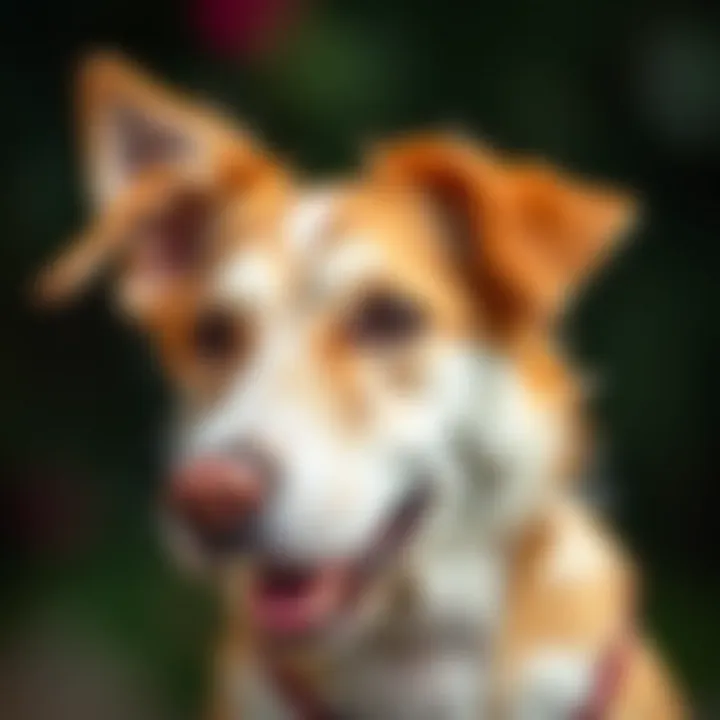
Frequent outdoor time in areas less populated with flies can be beneficial. Choose open fields over dense foliage where flies may thrive.
Resources and Community Engagement
Recommended Books and Websites
- The Art of Raising a Puppy
- Canine Behavior: A Photo Illustrated Handbook
- Websites like ASPCA and PetMD provide invaluable information on pet care.
Forums and Groups for Pet Owners
Consider joining communities on platforms like reddit.com/r/dogs or other pet-oriented groups on Facebook. Sharing experiences can be enlightening.
Finding Local Services and Classes
Seeking local trainers or services can also be beneficial. Engaging with local veterinary clinics or pet stores can provide recommendations.
Encouraging Community Sharing and Contributions
Hosting community events at local parks can further educate dog owners. Sharing knowledge fosters understanding among pet enthusiasts.
Understanding the Fly Problem
Dealing with flies is no walk in the park for dog owners. A fly problem not only distresses your pet but can also lead to serious health issues if left unchecked. Understanding this topic is crucial as it equips you with the knowledge needed to keep your four-legged friend safe and comfortable.
Flies can be a nuisance, buzzing around your dog’s head, landing on fur and skin, and even laying eggs. The physical discomfort can lead to anxiety in dogs, causing them to scratch and bite at their own skin. This behavior may result in injuries or infections, requiring costly vet visits.
Moreover, different types of flies can carry various diseases. We must recognize these pests, to grasp the negative impacts they may have on our pets. Identifying and addressing the fly problem is the first step in ensuring the health and well-being of your dog.
Types of Flies That Affect Dogs
When it comes to flies that plague our canine companions, there are several types, each with its own unique behaviors and risks:
- House Flies: Common in many homes, these pests are not just annoying; they can carry harmful bacteria. They may feed on waste and decaying matter, making them potential carriers of pathogens.
- Stable Flies: Often found in rural settings or stables, stable flies feed on blood, causing painful bites for dogs. They can transmit diseases like equine infections in horses but are particularly bothersome for pets.
- Bot Flies: These are less common, but they pose significant risks. They lay eggs on a dog, which can then hatch into larvae and burrow into the skin, leading to painful infections. The mere thought of bot flies is enough to make any dog owner shudder.
- Fleas: Though often classified with other parasites, they are still worth mentioning. Fleas cause significant discomfort for dogs and can lead to severe allergic reactions if not treated timely.
By recognizing these types, pet owners can better understand which flies are causing problems and how best to address them.
Reasons Why Flies Are Attracted to Dogs
Understanding what draws flies to our pets is key to preventing their presence. Here are some common reasons why flies might come buzzing by:
- Scent: Dogs’ natural scent can attract flies. They release pheromones from their skin, which can be noticeable to these pests.
- Sweat and Moisture: Just like humans, dogs sweat. This moisture, especially on hot days, can allure flies looking for a refreshing drink or a meal.
- Open Wounds or Skin Issues: If your dog has any abrasions or skin infections, flies may be drawn to these areas. They can lay eggs on exposed skin, causing further complications.
- Poor Hygiene: Flies are often attracted to dirty living conditions. If your dog's area is untidy or there is leftover food, it becomes a picnic for flies.
Identifying the Signs of Fly Infestation
Detecting fly infestation early can make a world of difference for both you and your furry friend. Flies, while often seen as mere nuisances, can lead to discomfort and even health issues for dogs. Awareness of specific signs ensures timely intervention. Noticing flies buzzing around your pet or in your living space can be a red flag, but there are more subtle indicators that all is not well. This section delves deeper into behavioral and physical symptoms that indicate a potential fly problem, arming you with knowledge to protect your dog.
Behavioral Indicators in Dogs
Flies can cause more than just surface-level annoyances for dogs. Here are some behavioral signs that your pet may be feeling the effects of these pesky insects:
- Increased Scratching and Biting: If you notice your dog constantly scratching or trying to bite at its skin, it might be reacting to fly attacks. Dogs have a natural instinct to defend themselves against unwelcome annoyances.
- Restlessness: A dog that’s uncomfortable will often show signs of being unable to relax. If your normally calm canine is pacing or unable to settle down, it’s time to keep an eye out for lurking flies.
- Seeking Refuge: Many dogs will instinctively look for shelter when annoyed by pests. If your dog is hiding under furniture or trying to stay indoors more frequently, flies might be picking on it.
Recognizing these behaviors is crucial in ensuring your dog’s mental well-being. Ignoring them can lead to more significant stress or behavioral issues down the line.
Physical Symptoms to Watch For
Beyond behavioral changes, watch for these physical signs that a fly problem is brewing:
- Excessive Licking: Dogs may excessively lick certain spots, particularly if bugs are irritating their skin. Pay attention if your dog is fixated on any specific area.
- Redness or Irritation: Check your dog’s skin for signs of irritation, such as redness or swelling. Flies can bite and the resulting irritation may lead to scratching, creating a vicious cycle.
- Allergies or Infections: The bites from flies may lead to secondary infections or allergic reactions, showing symptoms like swelling or discharge. If you see areas that look infected, seeking veterinary help is key.
Flies bring not just discomfort, but the potential for serious health risks. Early detection is essential.
In summary, being vigilant about your dog’s behavior and physical state is critical in identifying fly infestations. Recognizing these signs can help you take necessary steps to rid your dog and home of these bothersome insects. It is better to act at the first glow of a fly issue than to let it spiral into an ongoing nuisance. Regular check-ups, hygiene, and observation will safeguard your dog from these unwelcome guests.
Immediate Removal Techniques
Dealing with flies around your dog is an urgent concern that needs immediate attention. Not only can these pests cause discomfort for your pet, but they can also pose serious health risks with their bites and potential disease transmission. Hence, employing swift removal techniques is essential to mitigate the annoyance they bring. By expediting the fly removal process, you can help assure your dog remains calm and playful. Let’s delve into specific methods for removing flies effectively.
Using Fly Traps and Sticky Strips
Fly traps and sticky strips offer a straightforward yet effective way to manage fly problems around your dog. These items work by attracting flies via scent or color and trapping them effectively. It's crucial to place these traps away from your dog's immediate area to prevent any accidental sticky encounters. Position them near areas where flies are often seen, such as refuse bins or garden entrances.
Key Considerations:
- Use non-toxic traps: Make sure the products are safe around pets to avoid unwanted health issues.
- Clean regularly: A full trap won’t do its job well. Dispose of caught flies regularly to maintain attraction.
- Combine methods: While traps are useful, pairing them with other strategies can enhance effectiveness.
Benefits of Fly Traps:
- Non-Invasive: They work passively without requiring you to actively intervene each time you see a fly.
- Cost-Effective: Generally, these traps are inexpensive and can prevent heavier investments in pest control down the line.
Applying Natural Repellents
Natural repellents can serve as a gentler alternative for pet owners who prefer not to use chemical solutions around their dogs. Essential oils like lavender, peppermint, and eucalyptus can deter flies when used properly. When opting for these methods, dilute the oils with a carrier such as coconut oil or water before applying. You can gently rub the mixture onto your dog’s skin, focusing on areas vulnerable to fly annoyance.
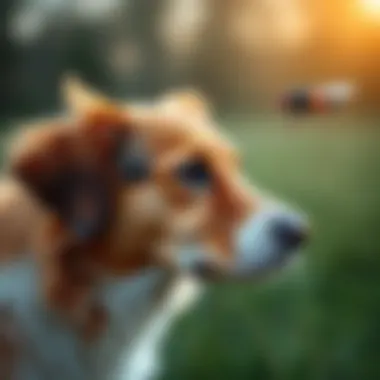
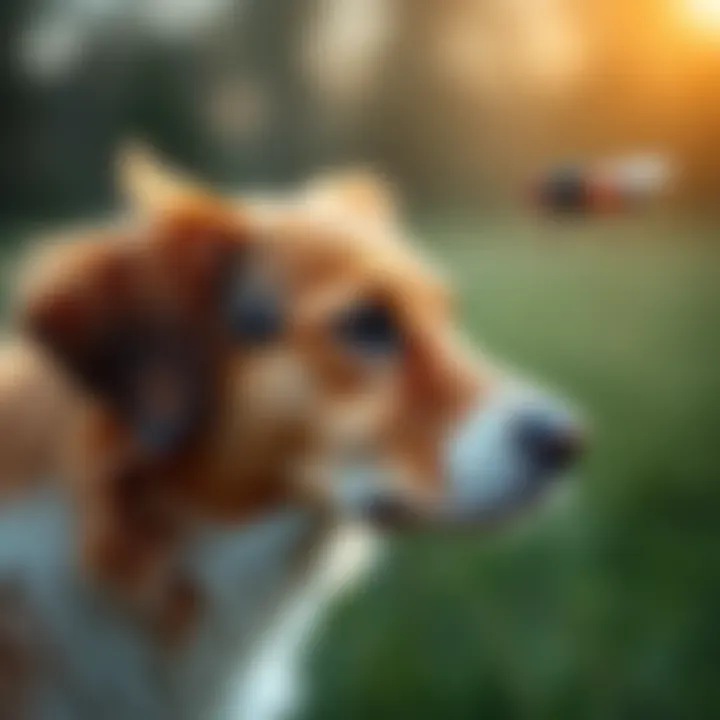
Natural Repellent Options:
- Lavender Oil: Not only does it smell nice, but it also has calming properties that help soothe your dog.
- Peppermint Oil: A strong scent that flies dislike. Applying it judiciously can effectively keep them at bay.
Important Steps:
- Dilute Properly: Never apply essential oils directly; always dilute to avoid skin reactions.
- Spot Test: Apply a small amount to a part of their fur before broader application.
- Monitor Reactions: Observe your dog for any signs of discomfort or allergies.
Implementing Physical Barriers
Preventing flies from accessing your dog can often be as effective as removing them. Physical barriers can create a protective environment, especially for outdoor areas. Dog crates with screens or using specific outdoor wraps can be efficient solutions.
Examples of Physical Barriers:
- Dog Crates: Ensure that when your dog is outdoors, select a crate where they can stay safe from flies, fitted with screens to allow ventilation.
- Dog Tents: Portable tents designed for pets can serve as a sanctuary that minimizes fly exposure while allowing fresh air.
Considerable Advantages:
- Immediate Control: They protect against fly access right away.
- Safe Space: Your dog can relax without constant swatting at pests.
Long-term Prevention Strategies
In the battle against the ever-persistent problem of flies affecting dogs, proactively addressing the conditions that attract these pests is crucial. Long-term prevention strategies not only help protect your dog but also enhance the overall quality of their living environment. Understanding how to keep flies at bay can significantly reduce their impact, increase your dog's comfort, and contribute to better health overall.
Maintaining Cleanliness in Living Spaces
Keeping your home clean is paramount in fly prevention. Flies are typically lured to dirty environments, where food remnants, waste, and moisture persist. Therefore, regular cleaning is essential. Make it a routine to:
- Wipe down surfaces frequently: Focus particularly on areas where food is prepared or where your dog eats.
- Dispose of trash properly: Use bins with tight-fitting lids and take out the trash regularly.
- Wash dog bedding regularly: Flies can find breeding grounds in soiled fabrics, so it’s beneficial to wash your dog's bed every week.
- Vacuum often: This simple act can help eliminate not just flies, but eggs and larvae as well.
Implementing these cleaning habits can make a significant difference, making your living space less inviting for flies.
Grooming Practices to Minimize Fly Attraction
Regular grooming is of utmost importance when it comes to keeping flies away. A well-maintained coat minimizes the likelihood of flies being attracted to your dog. Here’s how you can effectively groom your dog to fend off flies:
- Bathe your dog regularly: A clean dog is less appealing to flies, especially if you use a gentle shampoo that has natural repellents.
- Brush their coat: Regular brushing reduces loose fur and dander that can attract flies.
- Check for irritations: Flies often target wounds or skin irritations. Keeping an eye on your dog's skin health is crucial. If you notice any areas needing attention, don’t hesitate to consult your veterinarian.
The grooming process not only keeps flies at bay but also promotes the overall health of your dog, enhancing their comfort.
Gardening Tips to Deter Flies
The outside environment where your dog spends their time also plays a vital role in fly prevention. Using certain plants and landscaping strategies can help mitigate fly attraction. Consider the following tips:
- Plant natural repellents: Marigolds, basil, and lavender are examples of plants that are known to repel flies. Consider incorporating them into your garden or near your dog’s favorite resting spots.
- Ensure proper drainage: Flies thrive in moist conditions. Ensure that your garden is well-drained to avoid standing water.
- Compost correctly: If you compost, make sure to manage it properly. Allowing meat scraps or overripe fruits to rot invites flies.
By making thoughtful adjustments in your garden, you can foster an environment that is much less hospitable to flies, consequently contributing to your dog’s well-being.
Keeping flies away is not just about immediate action; rather, it’s a long-term commitment to cleanliness and proactive care.
In summary, these long-term prevention strategies present practical steps that can lead to a significant reduction in fly infestations affecting your dog. Clean living spaces, diligent grooming, and strategic gardening can lay the foundation for a healthier and more pleasant environment, making both you and your canine companion's lives much easier.
Home Remedies for Fly Control
Home remedies for fly control can offer an effective and holistic approach to dealing with pesky flies that bother pets, specifically dogs. These natural strategies not only aim to repel flies but do so using non-toxic ingredients, making them safe for both pets and the environment. Understanding these remedies is crucial for dog owners who wish to maintain a comfortable living space for their furry friends without resorting to harsh chemicals.
Utilizing home remedies taps into nature’s arsenal to create an unpleasant environment for flies while simultaneously providing solutions that are easy to access and implement. Simple ingredients found in the kitchen or a local store can make significant strides in eliminating flies. Moreover, many of these methods can also be part of a regular upkeep routine, furthering their effectiveness.
Essential Oils as Fly Deterrents
Essential oils are not only aromatic, but they pack a punch when it comes to pest control. Oils such as lavender, eucalyptus, and peppermint have proven to be effective fly repellents. The bonus? They smell considerably better than harsh chemical sprays. When used appropriately, these oils can provide a layer of protection against intruding bugs.
To use essential oils, dilute a few drops in a carrier oil like coconut oil or olive oil. Here’s a simple method:
- Take a small spray bottle and fill it with three tablespoons of carrier oil.
- Add ten drops of your chosen essential oil.
- Shake it well to mix and then spray it around your dog's area—avoiding direct contact with their skin or face.
Remember, always test a small area first if your dog has sensitive skin.
Engaging with essential oils is more than just a fly deterrent; it can also be a soothing experience for your dog, especially with calming scents like lavender providing relaxation. Be mindful not to use excessive amounts, as too much essential oil can irritate a dog or lead to adverse reactions.
Vinegar Solutions for Instant Relief
Vinegar is another versatile substance that shines as a home remedy. Its strong scent acts as a natural fly repellent, which can be particularly effective in outdoor settings. White vinegar or apple cider vinegar can be used to create effective solutions.
One quick approach is to mix equal parts vinegar and water in a spray bottle and apply it directly in the areas where flies frequent. Alternatively, placing a bowl filled with vinegar around your living space can trap flies. They’re drawn to the strong scent, but the vinegar’s acidity makes it impossible for them to escape.
To concoct a trapping solution:
- Fill a bowl with apple cider vinegar about halfway.
- Add a couple drops of dish soap. This helps break the surface tension of the vinegar, making it harder for flies to escape.
- Set the bowl in fly-prone areas, and watch as the flies are lured in and trapped.
Vinegar solutions provide instant relief and can be particularly useful during the height of fly season. Not only are they inexpensive and easy to prepare, but they also create a less inviting atmosphere for flies, combining efficacy with accessibility in your battle against unwanted pests.
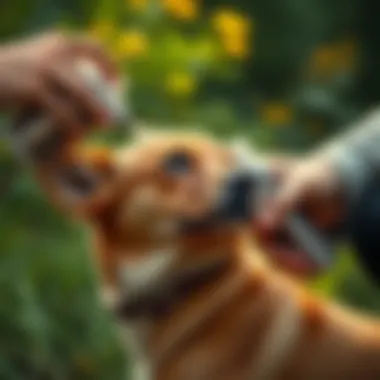
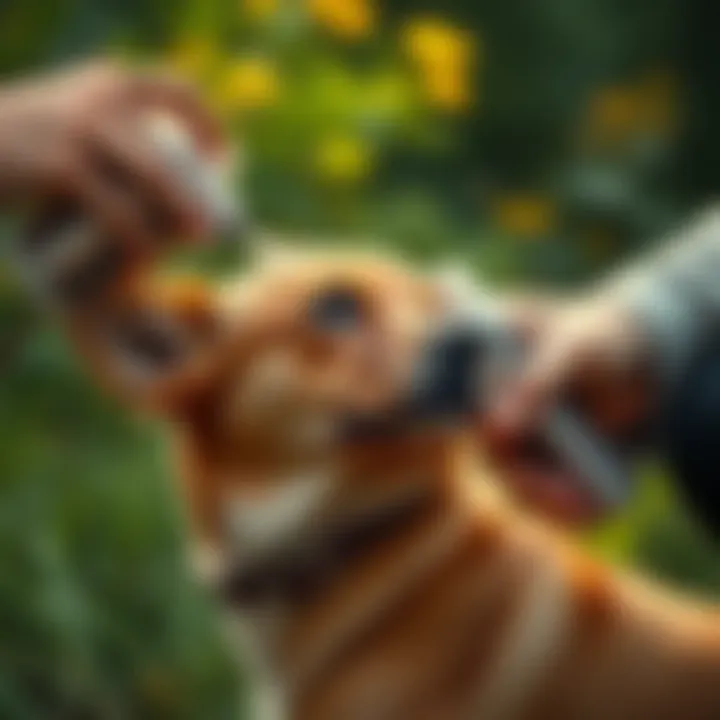
When to Seek Professional Help
In the ongoing battle against flies, there may come a time when home remedies and preventive measures just don’t cut it. Understanding when to seek professional assistance is crucial not only for your dog’s comfort but also for their overall health. Flies, while often seen as mere nuisances, can lead to some serious health complications if left unchecked, making it essential to recognize the signs that require professional intervention.
Persistent Fly Problems
When flies seem to take up residence in your home despite your best efforts, it’s time to consider professional help. Persistent fly problems are more than just an annoyance; they can indicate an underlying issue. For instance, if your dog seems to be swatting at flies constantly or if you notice clusters of flies around your living spaces, this could signal a breeding site nearby or even health issues affecting your dog.
Key considerations include:
- Frequency: If you find yourself reaching for fly traps or sprays more than a few times a week, it’s likely that your dog could be more seriously affected than you realize.
- Bedding and Living Space: A close inspection of your dog’s sleeping area might uncover decomposition or leftover food that persists in attracting flies.
- Behavioral Changes: If your dog exhibits signs of distress or unusual behavior, like scratching excessively, it may be time to consult a vet.
Ignoring a growing fly problem isn’t just about comfort; it can lead to further complications, so don’t hesitate to reach out to professionals.
Health Risks Associated with Flies
Flies can carry diseases that threaten your dog’s health. From transmitting parasites to causing allergic reactions, the health risks associated with flies are manifold. It’s imperative for pet owners to be aware of these dangers.
Here are some health issues that may arise due to fly infestations:
- Skin Infections: Flies can lay eggs on wounds, causing infections that require immediate veterinary attention.
- Parasite Transmission: Flies like houseflies can carry larvae of other parasites, adding to your dog’s discomfort.
- Respiratory Issues: In some cases, flies can trigger asthma or allergies, leading to respiratory issues for sensitive dogs.
- Disease Vector: Certain flies can spread viruses and bacteria that lead to serious diseases.
"Recognizing when to seek professional help can turn a minor nuisence into a resolved issue."
The Role of Vaccinations and Health Checkups
When addressing the issue of flies affecting dogs, it's easy to overlook the subtler yet incredibly vital aspects of preventative care like vaccinations and regular health checkups. They might not seem directly linked to fly control at first glance, but ensuring a dog is healthy and vaccinated can significantly reduce the risk of fly-borne diseases, leading to better overall well-being for our furry companions. This section dives deep into why these practices should be part and parcel of your pet care regimen, especially if fly issues are prevalent in your area.
Importance of Regular Vet Visits
Routine trips to the veterinarian are crucial for maintaining a dog's health. A visit at least once a year allows for early detection of potential health issues that could attract flies or exacerbate infestations. Think of it as hitting two birds with one stone: you keep your dog healthy while addressing any problems that could arise from prevalent flies. Here are some reasons why these checks matter:
- Preventative Care: Regular checkups can catch conditions that may not show visible signs yet. Conditions such as skin infections, which can occur due to fly bites, can be swiftly addressed.
- Health Monitoring: Keeping a record of your dog's health enables the veterinarian to track any changes over time. This monitoring can lead to early intervention when issues arise, possibly linked to fly infestations.
- Vaccinations Review: As vaccines might need updating, visiting your vet ensures that your dog is equipped with the necessary defenses against various diseases, some of which may be transmitted by flies.
These routine checkups are not just about vaccinations; they offer a comprehensive understanding of the dog's health. A healthy dog has a stronger immune system, reducing the likelihood that it will attract those pesky flies in the first place.
Vaccines That Help Protect Against Fly-borne Diseases
Fly-borne diseases can wreak havoc on a dog's health, making it important to stay ahead of the curve with vaccinations. While no vaccine can specifically target flies, many vaccinations do fortify a dog’s overall health and immune responses against illnesses that might arise from those pesky insects.
- Rabies: This fatal disease can be transmitted through infected animals, and flies can sometimes carry parasites that transfer rabies. Keeping this vaccine up to date can prevent serious health issues.
- Leptospirosis: Flies can spread this bacterial infection through contaminated water. It's a good idea to ensure your dog is vaccinated as Leptospirosis can lead to severe kidney and liver damage.
- Bordetella: While often seen as a kennel cough vaccine, dogs that are stressed or have compromised health due to flies can be more susceptible to respiratory infections.
"Vaccination isn't just about preventing diseases, it's about creating an indomitable barrier that helps to keep our pets happy and healthy."
In summary, vaccinations play a crucial role in fortifying your dog's health against various ailments, including those exacerbated by flies. Addressing health proactively makes it much easier to manage potential infestations and protect your pooch from the discomfort and complications that pests bring. Incorporating regular vet visits into your pet's routine not only supports fly management but also significantly contributes to a healthier, happier life for your dog.
Community and Environmental Cooperation
When it comes to keeping your beloved dogs safe from flies, the impact of community cooperation can’t be underestimated. Working together with your neighbors not only amplifies efforts against these pests but also nurtures a sense of shared responsibility. In many neighborhoods, flies can thrive due to common breeding grounds such as garbage, standing water, or even dog waste. So, tackling these nuisances becomes a joint venture that benefits all.
One of the main advantages of engaging with your community is the pooling of resources. Perhaps one neighbor has a large garden space where they could set up traps, while another might have connections to local pest control services. By sharing knowledge and tools, you can effectively lower the fly population in a coordinated manner. Moreover, increasing community awareness about the problem is vital because it encourages others not only to participate but also to adhere to best practices in maintaining cleanliness.
Engaging Neighbors in Fly Control Efforts
Getting neighbors involved in fly control efforts can be as simple as hosting a community meeting or organizing informal discussions at local parks. Some important steps might include:
- Educating neighbors on the fly problem: Share information about different types of flies that affect dogs and the health risks they pose. This awareness can prompt quick action from dog owners in the community.
- Forming a fly control group: Consider forming a neighborhood group focused on fly prevention. They could share strategies, recommend fly-repellent products, and arrange bulk purchases of traps or repellents, saving everyone a little money.
- Communication Platforms: Utilize social media groups or apps such as Nextdoor to discuss issues related to fly control. Sharing successes, challenges, or updates can be motivating.
- Organizing Fly Control Days: Setting a specific day for the neighborhood to come together for a clean-up can significantly help. During these clean-up days, everyone can tackle waste disposal, gather potential fly breeding sites, and improve overall cleanliness dramatically.
Neighborhood Clean-Up Initiatives
Clean-up initiatives are the backbone of any fly control effort. By focusing on shared spaces, like community parks or vacant lots, you can drastically reduce fly populations. The first goal should aim at removing any standing water and discarded food items that are often breeding grounds for flies. Here are some steps communities can take:
- Regular Clean-Up Events: Schedule monthly clean-up events where residents can pitch in. Use flyers or social media to spread the word and update your neighbors about the importance of keeping shared areas clean.
- Incentives for Participation: Consider local businesses providing discounts to the volunteers who show up for clean-up days. This can create a sense of camaraderie and drive participation.
- Educating on Waste Management: Host workshops to educate residents on proper waste disposal and composting techniques that minimize odors and decrease fly attraction.
- Creating a Fly-Free Zone: Identify problem areas and turn them into fly-free zones, with clear signage promoting cleanliness. This can create visual reminders for residents to keep these areas tidy.
"Community is like a garden; it needs tending and care to flourish and keep away the pests that threaten its beauty and health."
By fostering community and environmental cooperation, pet owners can create a more sanitary living space not just for their dogs, but also for their wider community. Working together yields a cleaner habitat and fosters stronger ties among neighbors as they unite to protect their dogs and shared spaces from the pesky fly menace.
Culmination
When dealing with the pesky problem of flies bothering dogs, it's crucial to piece together an effective strategy that not only addresses immediate concerns but also sets the stage for long-term peace of mind. This article has effectively covered various aspects, from identifying the pesky flies to simple yet effective removal methods, wrapping up with prevention strategies and the significance of maintaining your dog's health.
Summarizing Effective Strategies
To provide clarity on key points discussed:
- Immediate Removal: Techniques like using fly traps and natural repellents should be employed at once. These methods can keep those flying nuisances at bay, allowing your dog to enjoy its outdoor freedom without the constant swatting at flies.
- Long-term Prevention: Regular grooming and cleanliness in your home are pivotal. This ensures that flies won't find a welcoming haven anywhere around your dog. It's essential to pay extra attention to areas where food is stored or disposed of, as these are prime spots for attracting flies.
- Home Remedies: Taking advantage of household items like vinegar and essential oils can offer effective deterrents against flies. These remedies are often safe and can be financially friendly, providing another layer of protection without the potential harshness of chemical solutions.
"An ounce of prevention is worth a pound of cure." - this saying rings especially true in the realm of fly control for dogs. Being proactive about potential fly issues can mean fewer headaches for both you and your pet down the line.
Using these strategies creates a comprehensive approach, tackling not just the removal of flies, but also minimizing their future presence.
Encouraging Ongoing Awareness and Action
While addressing fly concerns can seem overwhelming at times, it's essential to remain vigilant. Routine checks and awareness of both your dog's behavior and environment play a critical role. When you notice any signs of fly-related discomfort in your dog, act swiftly. Ignoring these signs could lead to greater health risks that would be easily avoidable with early intervention.
It's also wise to engage your community in these efforts. Conversations with neighbors about common problems can foster collective action, which often leads to a more effective solution.
In sum, understanding the full gamut of fly control techniques empowers pet owners to keep their dogs happy and healthy. Stay attentive, informed, and proactive, and you can cultivate a fly-free environment for your beloved companion.















